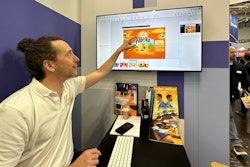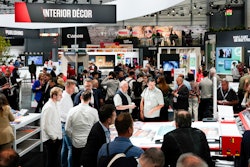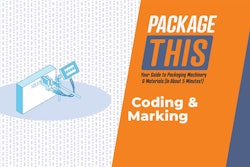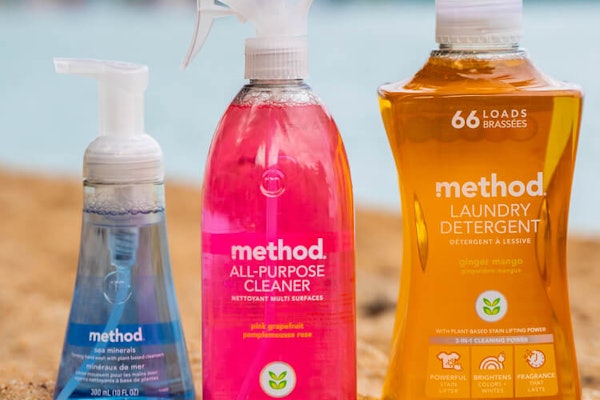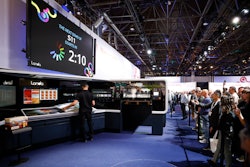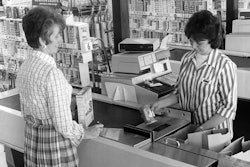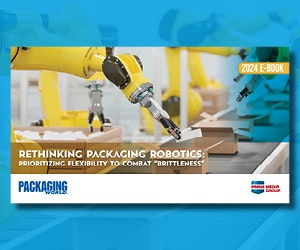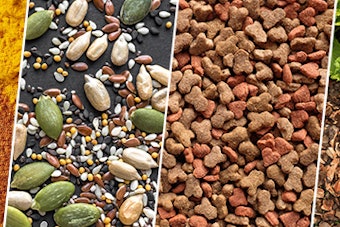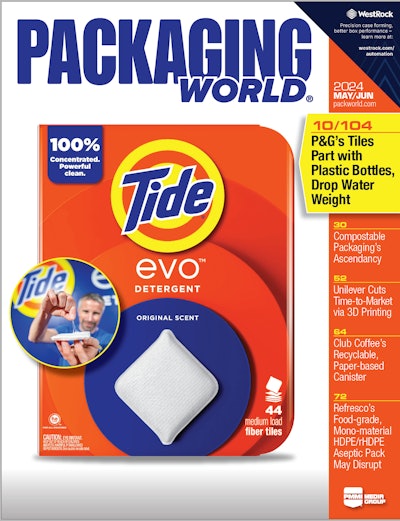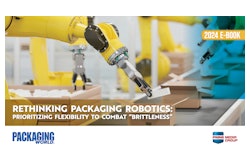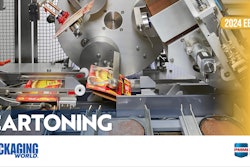
Digital printing undoubtedly is still evolving as a technology, but it seems to be maturing before our very eyes. In the eight years since the last drupa, digital printing has made strides in adoption. These new capabilities at forward-thinking converters stand to make a huge impact on how, and how quickly, brands go to market with new products.
As it has emerged over the past decade or two, digital printing’s growth trajectory has eaten into the entrenched territory of offset, rotogravure, and flexographic printing methodologies. In its infancy, digital printing tech entered the market specializing in quick turnaround, short-run, and high-mix/low-volume job environments since no metal plates need to be cut before running a package printing job. But in recent years, and depending on whom you ask, the quality of digital printing has caught up to or even surpassed that of traditional, analog methods. And the cost for digital printing presses to do more traditional jobs—longer runs of singular jobs for higher volume and lower mix—is becoming competitive with those legacy methods. Adoption is perhaps in the steepest portion of the ‘S’ curve for the biggest players, like HP Indigo. Meanwhile, Landa’s Nanography®, a novel new digital printing technology, has weathered early hurdles to surge forward in adoption in recent years. Still, challenges remain.
“The predominant issue with digital print is the production costs for a given run length compared to the analog alternative. For digital to win more broadly, it must look beyond just consumables cost and look at reducing overall value chain costs including running costs, maintenance, capital, useful life, and any other steps or parts that can be streamlined. Digital print, in general, has a big problem with amortization of the overall solutions supporting capital and infrastructure required. Certainly, for parts of the market already identified [high-quality graphics, samples, mock-ups, displays, short run, large format, double-sided print, and supply chain efficiency including turn-around time], digital print can work and add value. However, to get at the larger volume of work, digital must either add new value and/or improve cost structure to compete with optimized analog processes,” said Robert Seay, VP of digital print strategy and growth, Georgia-Pacific, a major corrugated and cartonboard converter and supplier to CPGs, brand owners, and FMCGs. “It is encouraging to see there is a next generation of solutions being developed that will hopefully help make some of the necessary improvements to expand the segments of the market where digital can add value. With these solutions, they are addressing the broader value chain, reducing steps, and improving overall economics rather than just addressing print.”
Seay described a slower-than-hoped, but real maturation of digital printing from initial "one-size fits all" solutions to specific, tailored use cases. It’s progressing from a whizzbang, niche technology to rival entrenched legacy equipment on all fronts—quality, speed, economics/cost, and even sustainability/waste.
“There comes a point in the technology maturity cycle, where you go from being a curiosity to something that people can use and depend on,” Simon Lewis, SVP at Highcon, told Packaging World at drupa this month. “Now, we have customers with three and one customer even with four Highcon systems. And their businesses depend on them. When you reach the point that your customers can depend on you, and that without you, their business gets stuck, then you know that you've crossed the adoption chasm. That doesn't mean the industry is crossing the chasm. But when a few guys do it, then you know that the rest won't be so far behind.”
Lewis was specifically referencing Highcon's digital die cutting and creasing corner of the industry, just downstream from the digital presses, but the sentiment holds true for wider digital printing. HP Indigo has already taken the industry by storm, and Landa appears poised to finally enter the mainstream, just as Highcon currently is doing. Campaigns that allow consumers to personalize their packaging, such as the this custom campaign for Nutella that HP was displaying, have been highly successful.
Campaigns that allow consumers to personalize their packaging, such as the this custom campaign for Nutella that HP was displaying, have been highly successful.
Why brands should care
All of that might be interesting, but why would brand owners care how their cartonboard, flexible packaging, or labels are printed? Why should it matter how they’re creased? They don’t necessarily care how the sausage gets made, as long as it gets made in such a way that’s has some material advantage over the previous sausage-making tech.
“I'm always trying to look through the eyes of the brand owners and what they are interested in. They don't want to know how the sheet feed is constructed. They don't want to know how many colors, and this and that. They want to see a result that matches their expectations and want to have a good solution that’s affordable and sustainable. That's their interest,” said Uwe Melichar, European Brand and Packaging Association VP at drupa.
True, brand owners might not need to know what makes digital printers or creasers tick. But they do need to know if their converter suppliers have digital printing capabilities, what kinds of digital printing capabilities they might have, and how they can work with their converter suppliers to take advantage of the areas where digital printing really shines among other methods.
Digital printing use cases
Digital printing also offers significant advantages in terms of supply chain agility. The ability to produce packaging on demand means that brands can respond more quickly to market changes and consumer preferences. This is particularly important in today's fast-paced market environment, where trends can change rapidly. "We essentially help them efficiently cope with high-mix, low-volume environment," Eli Mahal, head of L&P Marketing at HP Indigo said. This agility can be a key competitive advantage for brands, allowing them to stay ahead of the competition.
Digital printing also enables greater customization and personalization of packaging. This can be a powerful tool for brands looking to engage with consumers on a more personal level. Campaigns that allow consumers to personalize their packaging, such as the Coca-Cola "Share a Coke" campaign, have been highly successful. "These campaigns are very effective. Companies see advantages in consumer engagement, brand exposure, social media, and increasing sales," noted Gershon Alon - Head of HP PrintOS, HP Indigo, at the booth. By making it easier for brands to implement these types of campaigns, digital printing can help drive consumer loyalty and brand recognition.
A critical aspect of digital printing is its role in enhancing brand protection and combating counterfeiting. With the ability to incorporate unique identifiers and variable data, digital printing can help ensure product authenticity. This is particularly important for high-value items and pharmaceuticals, where counterfeit products can pose significant risks to consumer safety, and also through e-commerce channels where the provenance of a product can be unclear. By leveraging digital printing technologies, brands can add layers of security to their packaging, making it more difficult for counterfeiters to replicate.
Also, digital printing supports the growing trend of smart packaging—from simple customized QR to more complex operations where RFID conductive material is digitally printed, in multiple layers, onto a substrate. Integrating technologies such as QR codes, NFC tags, and RFID chips into packaging can provide consumers with interactive experiences and valuable information about the product. This can range from tracking the product's journey from production to shelf, to offering personalized promotions and content. As consumers increasingly seek transparency and engagement, smart packaging enabled by digital printing can meet these demands and enhance the overall consumer experience. And what's more, brands can track, quantify, and manage data about consumer engagement, garnering brand insights they never had access to before. Digitally printed RFID tags at the HP Indigo booth.
Digitally printed RFID tags at the HP Indigo booth.
The ability to quickly adapt to regulatory changes is another advantage of digital printing. As governments worldwide implement stricter regulations on packaging materials and labeling requirements, brands must be agile in their response. Digital printing allows for rapid updates to packaging designs and information, ensuring compliance without the need for extensive retooling or long lead times. This flexibility can save brands significant time and resources, allowing them to focus on other critical aspects of their operations.
HP Indigo's Eli Mahal
 Eli Mahal took PW on an HP Indigo booth tour at drupa.
Eli Mahal took PW on an HP Indigo booth tour at drupa.
“All of those segments are enjoying excellent tailwind. The bigger picture is that we, as a global society, moved from the village to the city, from the market to the supermarket," said Mahal. “That has led to SKU proliferation, which means that the number or volume of jobs, per SKU, is decreasing all the time. That is creating a shift of jobs from the conventional sweet spot of longer run into the conventional sweet spot of digital print.”
The traditional model of producing large quantities of identical products is being replaced by a high-mix, low-volume approach. "Every brand owner, every brand manager of a certain product, now needs to forecast in a much more complex environment," explained Mahal. “'Which SKU will be successful? Which will fail? And how much packaging material do I need to order?' And then the regulations change for label claims or ingredients listings, so what's printed on labels and packaging needs to change quickly. This complexity is compounded by the need to minimize waste and meet stringent sustainability goals. If you're ordering the way you used to order 10 years ago, in large quantities with one-month delivery, you will probably end up throwing away 30% or 40% of what you bought.”
Digital printing offers a solution to these challenges. It allows brands to produce only what is needed, reducing waste and eliminating the need for costly printing plates that are time-consuming to cut from metal.
“Smaller brands are growing much faster than the larger brands, but they especially cannot cope with high minimum order [MOQs]. They cannot cope with one month's delivery, they cannot cope with paying $1000s for a multi-SKU product that they're going to sell a few hundred of each,” Mahal said. Eli Mahal demonstrates digitally printed cartonboard projects at drupa.
Eli Mahal demonstrates digitally printed cartonboard projects at drupa.
Sustainability chops with digital
Sustainability is another critical concern for both brands and consumers.
"When you are running, let's say a 1000-meter job on a flexo press, you would probably need 200 meters of setup waste until you start printing,” Mahal said.
In contrast, digital presses can significantly reduce this waste, saving both money and environmental resources by reducing or nearly eliminating media waste. Digital tech also is able to print on a wider range of media than legacy methods, Mahal said, including certain recycled, recyclable, and compostable materials. For instance, wash-off mono-PE labels allow the ink to be removed during the recycling process (de-inking), ensuring that the packaging can be reused as near-transparent or clear, and become packaging again (mono-PE) without contamination.
The shift to digital printing is not without its challenges. The industry must adapt to new technologies and processes, and brands need to be educated on the benefits and capabilities of digital solutions. "We are providing now a calculator in which a brand can ask themselves, ‘Where do I get a better environmental impact? Using high coverage, low coverage, this type of media, or that type of media?’" Mahal said. This tool helps brands think about where they produce (i.e., is their municipal power hookup using renewable energy, or fossil-based?), what type of media they’re using, and what type of print/ink coverage they would like or need, and then make informed decisions about their packaging choices based on environmental impact.
“Here, we are allowed to compare the CO2 emission of printing one job versus the other or the Indigo [digital] technology,” Mahal said. “And then the [converter] customer can compare these and present them to the brand owner, what the CO2 emissions are in digital, versus printing on flexo, and if we have the data [or can get it from a third party], versus printing on another technology.”
Digital label printing becomes competitive at volume
The journey of digital printing in labels began with narrow web presses and has more recently evolved to include wider formats. This wasn’t always the case.
“When our [converter] customers were comparing cost structure of printing digitally with all the advantages—time to market, variable data, waste savings, etc.—versus printing on a flexo asset, they saw that after maybe 1.5 to 2 kilometers [of a print run length], it’s cheaper to print with flexo,” Mahal recalls. “Therefore, we've developed a [higher volume & speed] machine which actually allows the customer to print four time or even five times faster than the early, narrow-web predecessor. Therefore, they can cut production costs of digitally printed labels, even below the cost of flexo. And then our customers can bring all the value of digital print—on-demand, low minimum orders, variable data, much higher agility, cutting media waste etc., and offer it to brands that are consuming a larger volume or to those SKUs that are more popular in the market, and therefore, assume higher volume.”
With the newer presses, HP Indigo aims to shift the industry from flexo first, digital second, to digital first and then flexo only for unique jobs.
“Two things are happening. As I mentioned before, the shift of jobs from the sweet spot of conventional to the sweet spot of digital. Also, there’s a shift of productivity of digital from [focusing on] shorter run and faster delivery, to longer runs with similar to lower cost structure to flexo. The old breakeven point of one or two kilometers be eliminated therefore, nearly every job can be printed digitally at lower costs of similar costs to flexo.”
Flexible packaging a different animal
Flexible packaging presents unique challenges due to its high sensitivity to cost and productivity (volume) requirements. Instead of labels which are prominent in wine, pharma, and cosmetics, flexible packaging is primarily used in higher volume food products, less expensive items, where sheer volume makes margins more important. Digital printing adoption for flexible packaging have been slower. Flexible packaging is subject to greater price sensitivity at higher volumes for less expensive products than labels, but digital printing is making major inroads--flexibles might be the fastest growth market for digital packaging, according to HP's Mahal.
Flexible packaging is subject to greater price sensitivity at higher volumes for less expensive products than labels, but digital printing is making major inroads--flexibles might be the fastest growth market for digital packaging, according to HP's Mahal.
Despite these challenges, the adoption of digital printing for flexible packaging has been growing over the last decade, and is now the fastest-growing digital print for packaging market, according to Mahal. Early adopters found a niche in serving small to medium brands that require high-quality packaging in smaller quantities. As the technology has advanced, larger players have entered the market, recognizing the potential for growth and profitability.
Cartons printed on B2 sheet material
“In some cases the brand will require digital print, a variable data for a campaign, or if brand protection and so forth is needed. But this will be 2%, maybe 5% of the volume. The remaining 95% of the volume is standard jobs,” Mahal said. “The brand should not care whether the job was printed digitally, or flexo, or offset, provided the quality is what they need. It’s just a matter of cost, the supply time, paying for tools, and impact on the environment. And our customers, many of them will even not even need to tell the customer that the job was provided digitally or flexo or offset, they will simply assign the right press for the job.”
Landa Nanography's Yarden Ben-Dor
 Landa Nanography's Yarden Ben-Dor
Landa Nanography's Yarden Ben-Dor
Nanography is said to “combine the variable-data and print-on-demand features of digital printing with the throughput speed, media versatility, and quality of offset printing,” according to the company. And for more than a decade now, it has held the promise for a sort of best-of-both-worlds scenario. But slow commercialization--due in part to waiting on patents, and in part to a wary or cost-sensitive marketplace of converters--hampered earlier adoption. Landa officials said that drupa 2024 demonstrates that a corner has been turned on Nanographic technology, including and especially Nanography for the packaging markets. Today, more than 60 presses are up and running in the market, and the word is out among converters. We sat down with Yarden Ben-Dor, VP of the S11 (folding carton) Nanographic press about how this emerging tech would be affecting brand owners in the coming years. Ben-Dor is hardly a packaging neophyte, he comes from brand-side cosmetics, pharma, and consumer goods packaging brands, from Arizona to Israel.
Advantages of Landa's technology for brand owners, Ben-Dor said, is superior color quality and stability of their presses. "Our biggest value proposition is the color," he said. "The way our color looks on a board, the color stability, and the color gamut are unmatched." This capability allows brands to achieve consistent, high-quality prints on various substrates, including recycled materials, which is increasingly important given the growing emphasis on sustainability.
Ben-Dor illustrated this with a practical example: "We have customers who can now purchase less expensive paper but gets the same and even better results than with offset presses." This not only reduces costs but also aligns with environmental regulations, particularly in Europe, where laws mandate the use of recycled content. Those content laws are coming to the U.S., if history serves as any guide.  Cartonboard printed on Landa's S11 press for cartons.
Cartonboard printed on Landa's S11 press for cartons.
“In the case of recycled content board, we have a huge advantage because of the way we print. We print on a heated blanket and transfer the ink only when the ink is completely dry. And then you have a very thin, very tacky [sort of] laminate that we adhere to the paper, but nothing gets absorbed into the paper. We also have very, very high de-inkability and recyclability scores, because of this process. We get very high grades in terms of what the resulting paper can be used for. Usually, using other methods, it would go to like a newspaper grade. But we actually get the office paper grade.”
On top of that, given that it’s a digital process, waste is saved in starting and stopping jobs (as alluded to by HP Indigo’s Mahal above). As usual with digital printing, no plates need be machined for each job, all adding to the sustainability profile.
Back to color, Ben-Dor emphasized that for brands who really want to stand out on the shelf, nanographically printed cartonboard can make a big impact.
“Unfortunately, most of our customers were printing with offset for many years. And brands that want to match that legacy package quality exactly—which is sometimes a brand requirement—they dumb down our quality to make sure that our output matches offset,” Ben-Dor said. “I understand it, but brands can also opt into much higher quality, and they’re starting to realize that… Really, for the brand it means much better agility with shorter lead times and faster time to market. And of course, if the converter rolls down his [productivity-based, running as fast as 11,200 B1 cartonboard sheets/hour] cost savings to the brands, then that's good for them, too.” Cartonboard printed on Landa presses are easily de-inked, making for higher quality recycled content.
Cartonboard printed on Landa presses are easily de-inked, making for higher quality recycled content.
Ben-Dor was tongue in cheek about his customers passing on their savings, but digital printing flexibility at offset printing speeds offers real operational efficiencies to converters, who really could pass some savings on to brands. Ben-Dor described a scenario involving UK customer MM Packaging doing variable data for brand protection purposes with pharma cartons.
"They're doing 50 make-readies in a shift with our press. To do that on offset would take about 50 hours, because these were brand color and spot colors that they were doing, then the runs are very short. They're doing like 200 to 300 sheets, because you have to remember we pharma, the boxes are small. If you're doing 30 up, at 300 sheets, it's 9000 boxes.
"And we did it in one shift. So for a brand, if they get 50 jobs in, they can plan better because now you got the responsiveness from MM, they don't need to hold anything in stock, and you’re printing just-in-time so if and when a brand manager makes a change, you don’t have wasted print jobs that were printed to inventory.” This efficiency is crucial for brands needing to respond quickly to market demands, allowing for just-in-time production and reducing the need for large inventories.
Another example was of a Chinese customer, ZRP Printing Group, who produces e-cigarette packaging: "They had over a million dollars in inventory just lying on the shelves. Now, with Landa, they're printing made-to-order, reducing waste and costs significantly." This shift to on-demand production is a game-changer for many brands, enabling them to adapt swiftly to changes in brand language and design, consumer preferences, and regulatory requirements.
Another brand-centered issue Ben-Dor brought up were the challenges of maintaining brand consistency across different production sites. "With Landa, we control the color because of our unique and proprietary process. It doesn't matter if you print on this press in one country or that press in another; it looks the same." This consistency is vital for brands like major beer and soda players, who rely on precise color-matching of cartonboard multipacks to maintain their brand identity—even on recycled board. With Landa color-matching, recycled board can match virgin board color.
Variable data printing (VDP) keeps popping up under various names and acronyms, but it's big advantage for digital printing. The integration of advanced digital features like VDP and brand protection measures adds another layer of value. Ben-Dor said, "We work with various partners to offer digital brand protection, track and trace, and security. For example, we have customers in cosmetics who are doing different types of QR codes that are very sophisticated." These features help brands combat counterfeiting and ensure product authenticity, which is crucial in industries like pharmaceuticals and high-end cosmetics. Start-up media waste savings on digital printing equipment from Landa vs. offset.
Start-up media waste savings on digital printing equipment from Landa vs. offset.
The flexibility offered by digital printing also extends to creative possibilities. Brands can experiment with different designs, run limited editions, and quickly adapt to market trends. Ben-Dor highlighted a case involving a major hair coloration company: "This company would rent out the capacity on an offset press at their converter for a week to do all their testing. With our technology, they can print whatever they want, make tweaks on the press, and save a week of work and a lot of waste." This agility allows brands to innovate and respond to consumer demands more effectively.
None of this is to say that offset is going away. It really depends on the economics behind a job.
“If you’re a [major cereal company] and you want print a million cereal boxes in the same quality as you have done for years, you come on Sunday morning to set up, and then print the same box until Friday night. In that case, it might not be wise to do it on a Landa because of the economics, even though the Landa press can do it,” Ben-Dor said. “But we do have customers who are printing 30,000, 40,000, or 50,000 sheets of a carton on Landa presses, just because of the color saturation and our ability to print on certain substrates, like recycled board. It saves them money on the board, it saves them time to market…The one thing I can’t control is cost—converters who buy our machines set the cost to print.
“But we know that for brands, it's about agility, flexibility, and time to market," he adds. "The ability to run sampling, proofing, and soft launches into a market with test packaging is invaluable, and we have the best quality as well and speeds. We're working with people who are at some pretty big brands, but I don't think the whole brand organizations know us yet. I would say I would like brands to be more engaged with us.”
Highcon's Simon Lewis
 Cartonboard for COSTA Coffee creased on a Highcon Beam with DART tech.
Cartonboard for COSTA Coffee creased on a Highcon Beam with DART tech.
For Highcon’s converter customers, this digital cutting and creasing tech pairs nicely with any digital printing equipment that might reside just upstream. After all, if a converter is digitally printing its carton packaging to avoid time-consuming machining of plates while adding the flexibility to make fast changes, wouldn’t the same preferences apply to the carton cutting and creasing operations, too?
“Sure, conventional die cutters work much faster,” said Simon Lewis, SVP, marketing, strategy, and business development, Highcon. “They process many more sheets per hour, there's many more units per hour. You don’t use a Highcon to run 50,000 impressions, even though we’re spec’d to be able to do that. You use a Highcon because you don't have to wait for the die, or you want the flexibility to make swift changes without waiting for new plates and dies to be cut.”
 | Read more about a 2020 Landa and Highcon project with Virtual Packaging in Grapevine, Texas, that was an industry first in all-digital package printing, cutting, and creasing. |
We sat down with Lewis to learn more and see the latest new digital die cutting and creasing equipment, the Highcon Beam 3. He is the first to volunteer that Highcon’s proprietary digital die-cutting and creasing process is really more of a hybrid analog/digital process than a true digital one. The resulting technology is taking off among many of the same converters that are leaning into digital printing. Lewis said this unique technology’s growing adoption is thanks to some combination of luck, prescience, and strategy by company founders.
“The first and most strategic decision that our founders made was to combine laser cutting with physical creasing,” Lewis told PW at drupa. “I’d even call it a brave decision because they set out to create a digital product for a digital age. Nevertheless, they decided that they were going to use a physical crease, which means it's not really a digital product. Because when you think of digital, there's no master [rule, plate, or matrix]. But [we use] a physical crease, where we digitally create a creasing matrix, but you still have a physical, master matrix that repeats. And therefore, you can call it hybrid.”
A true, fully digital process would amount to direct laser cutting of cartonboard to simulate creases. The process is almost identical to laser cutting only when creasing, the laser doesn’t fully cleave the board. Instead, it cuts do a depth of half or a third of the board thickness, or perhaps makes two or three shallower cuts in parallel. Those laser cuts remove material to create a groove or set of grooves in the cartonboard. Those groves act as guide rules along which the board is meant to bend in the transition from 2D to 3D as it’s erected on carton erecting equipment.
Such a process is entirely digital. No master rule or plate need be used since the laser simply cuts in the location and depth on the board that it’s programmed to cut. But this process doesn’t maintain the fully intact appearance, hand feel, or bending behavior of a creased (rather than cut) cartonboard. Physically creased material is mechanically pinched; no material is removed or cut. The way laser “creased” boards behave on carton erecting equipment can be different than traditional creased boards. What’s more, fully digital laser creasing on corrugated board is even trickier, since the cut only exists in one of two walls of corrugated that sandwich fluting material. A piece of corrugated may require laser “creasing” on both sides, and matching location is a challenge. And if a full wall is breached and the flute is exposed and cut, that will create a “floppy” fold, not a proper fold. Creasing with a physical rule is preferred in both applications. Carton multipack for Topo Chico cut and creased on Highcon equipment.
Carton multipack for Topo Chico cut and creased on Highcon equipment.
“Corrugated was not even on the vision chart when our founders first decided to go down this path, and they didn't understand just how important that decision would be. But it proved out to be very important,” Lewis said.
So how do you digitally create a physical, analog rule matrix to make impressions or creases in cartons? The Highcon process entails melting a consumable in the form of specialized photopolymer resin substrate, and digitally printing or “writing” that photopolymer into a digitally designed matrix that resides on a foil substrate. As it’s printed and light is applied, the photopolymer hardens into a rule pattern or crease matrix that is then used to repeatedly impress upon or crease cartonboard.
So what’s changed since 2016, when this tech was in its infancy? According to Lewis, like HP’s digital printing and Landa’s Nanography, the process is ramping up into the mainstream. In 2021, the fifth generation of DART consumables was launched with improved resin that’s more robust, specifying as many as 50,000 impressions (though, again, most converters aren’t likely to require that many impressions per matrix). Also the coating on the foil on which the creasing rules are written has been improved for greater durability and robustness. Put more simply, the biggest technological hurdles have been solved for the general technology, and the current focus is in fine-tuning the technology in the form of an all-new system, Highcon Beam 3 digital die cutting system.
Latest machine
The new Beam 3, like its Beam predecessors, digitally prints crease matrices onto foil within the machine. In perhaps the biggest departure, the system offers an offline, standalone Beam writer so that matrices can be printed in parallel to the ones being printed within the full Beam 3 enclosure, and immediately swapped out for quicker turnarounds.
“The Beam 3 that we're showing here is the first factory-produced Beam 3, so it's brand new,” Lewis said. “There's a lot more robustness. We've been improving the Beam over time, we've done a whole load of field upgrades. The optics moves faster so we [laser] cut 15% faster on average. We've shortened the setup time and made it less variable. We've got the option of writing the creasing foil offline on the beam writer, rather than in the Beam. We've got a customer in the UK, for example, who's going to take the beam rights is probably going to be the first. And by adding the beam writer, they're going to free up 50 hours a month for more production… Depending on the average run length, the improvement it can be by 25% by adding an [offline] Beam writer [to an existing Beam 3].”
How can this tech help brands?
Lewis sees three classes of brand owner and customer groups as beneficiaries of the new tech.
· E-comm, and web-to-pack converters supplying e-comm channels: “They're selling via e-commerce, which means by definition, they're selling smaller batches. They don't have to be tiny batches, but they're selling to people who find it easier to buy like that than to go through regular converters, who wants to deal in different kinds of [much higher] volumes. Web to pack is a classic for digital die cutting, and it often plays a classic for digital printing as well, because it becomes an entirely digital production,” Lewis said. Cartonboard for Chambord bottles, digitally cut and creased on Highcon equipment.
Cartonboard for Chambord bottles, digitally cut and creased on Highcon equipment.
· Small and Midsize Business (SMBs): “I don't mean cottage industry necessarily, though we can extend down to cottage industry, but I'm talking about the local brands that got a huge boost through COVID as people understood that they'd rather support local businesses. That doesn't mean the corner shop. It can be industrial businesses, but they're not national industrial business. Certainly when you're talking in the U.S., you find regional business that don't have national coverage. There's such a huge part of the economy, and they don't work in quantities of 100,000. They work in quantities of 1000s. So once over 10,000 it’s easy. But when it's a new product, when it’s a premium product, and when it's an experimental product, they want to deal in lower volumes. This is a group of brands that are not Nestle, P&G, Mars, or Hershey. They are a group of brands, that are desperately important because they're growing again. The classic industry, and we're not so much in their service, this craft beer. The craft beer is perhaps the most visible example of how the pendulum has swung back some of the mega brands, to the local brands, to variety, to authenticity, to sustainability, to Earthiness.
· Major brand owners: “Our [converter] customers are not going to do their mainstream, major brand owner, high volume production on Highcon. But in a world of SKU proliferation, and with so many form factor variations, then one of the things they want to be able to do is do a lot more prototyping, and more test marketing. Prototyping of 10 or 20 is easy, you use a CAD. But when you want to do 5000 units that you put in three stores, then the ability to do it on the Highcon, and not pay for the tooling to create it conventionally, is something that our customers need to go back to these [major brand owners] and sell. Because we all know that the process of creating packaging can take a frighteningly long time because people are stuck in past working phases. But digital production platforms offer them the ability to move much faster and get results. So test marketing, special promotions, and fail fast are were we shine. Or when there’s a spike in demand, and traditional die cutting and creasing capacity is maxed out, a Highcon can add another 5000 units for you quickly, and that ability has great value.”
Digital’s ascendency
Digital printing tech at HP Indigo and Landa, and digital die cutting and creasing at Highcon, occupy different spots on the adoption curve for packaging production. But a common word describing them all could be, as Lewis said, “mainstreaming.” HP Indigo may be the mainstream, with Landa seeming to be growing toward a critical mass, and Highcon tech maturing.
“For those of us who have been championing digital print and what is possible to transform the [packaging] industry, the pace of progress is both encouraging and disappointing. There are pockets of great success, but there is also a lot of work to do to get us to the full transformation that all members of the value chain need. These improvements and new solutions cannot get here fast enough,” summarizes Georgia-Pacific’s Seay of digital printing’s showing at drupa 2024. PW
